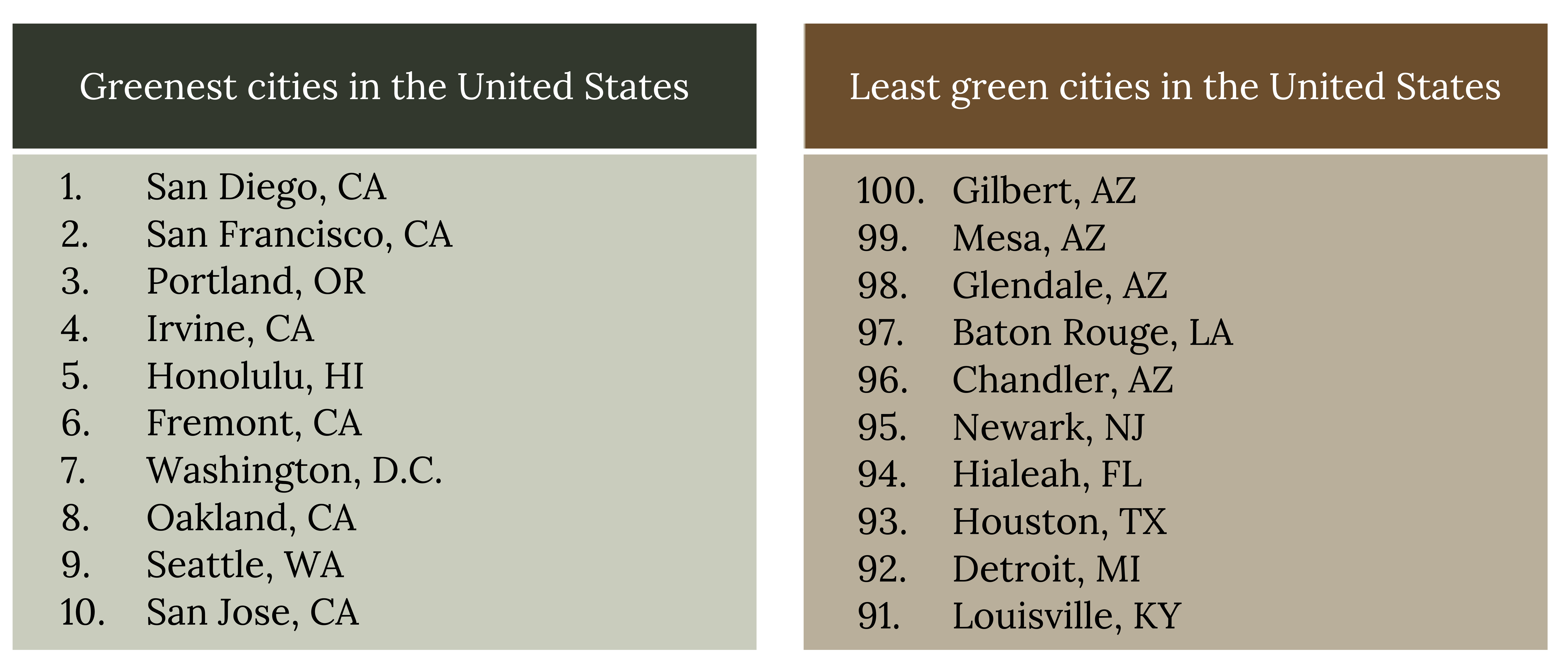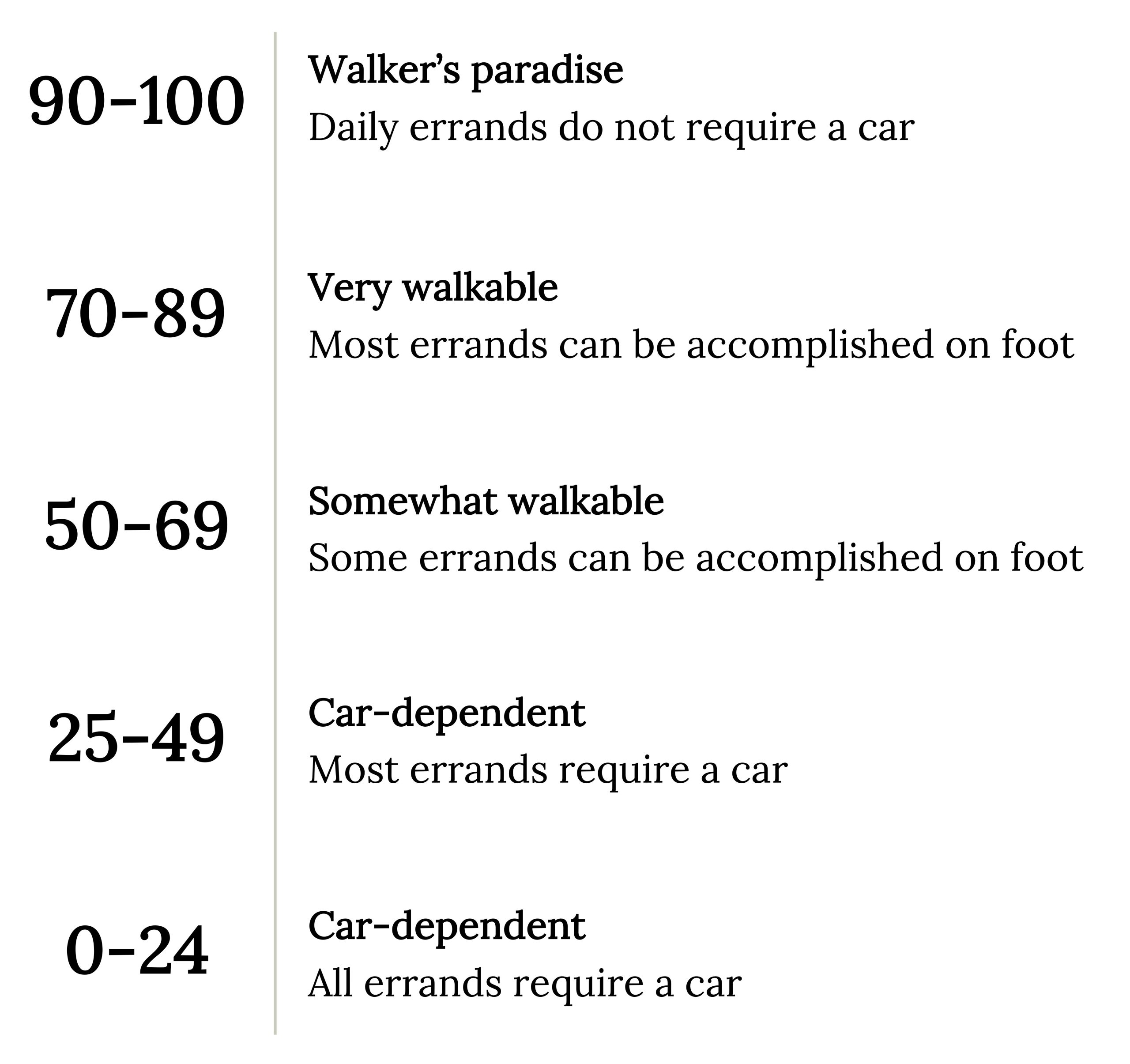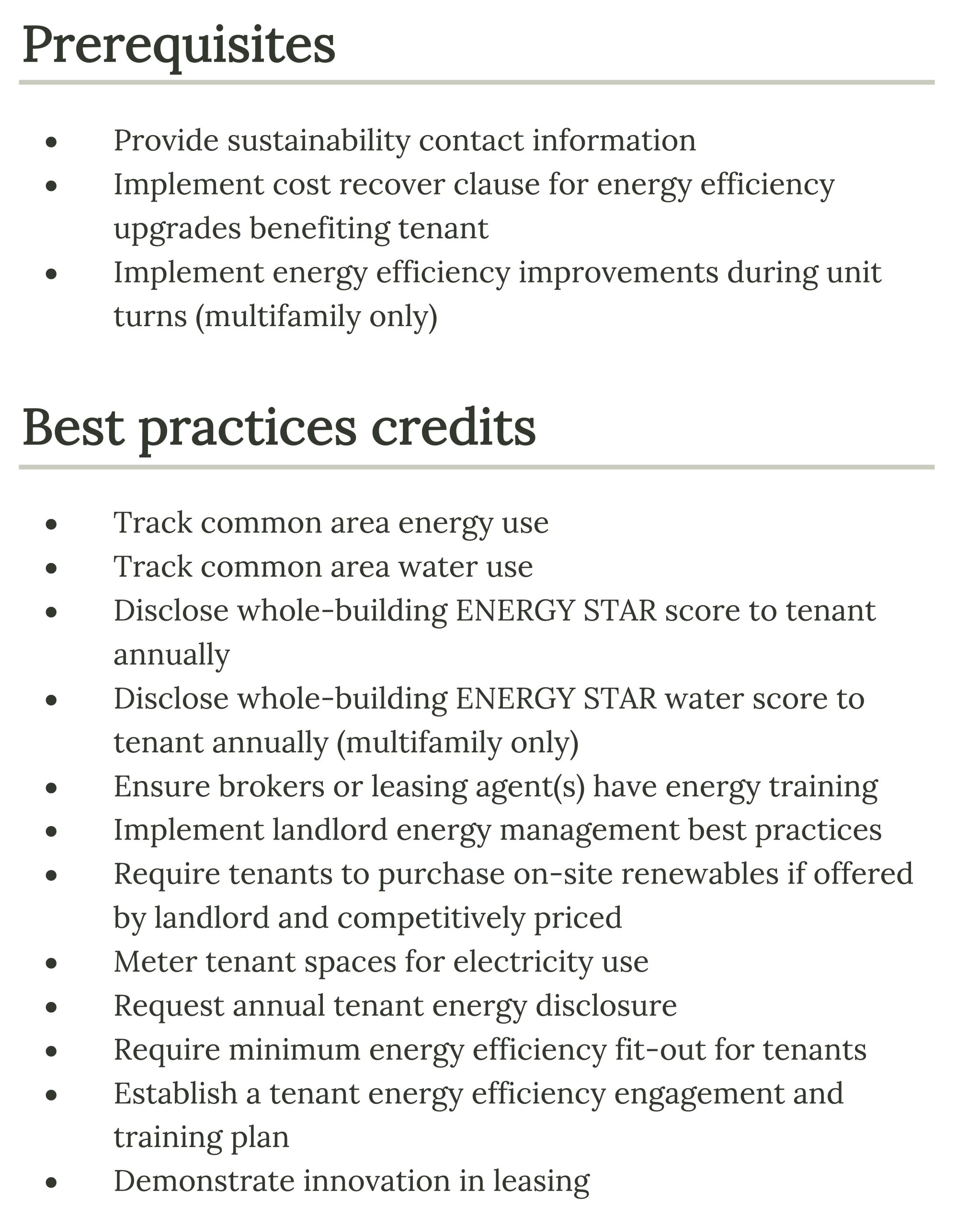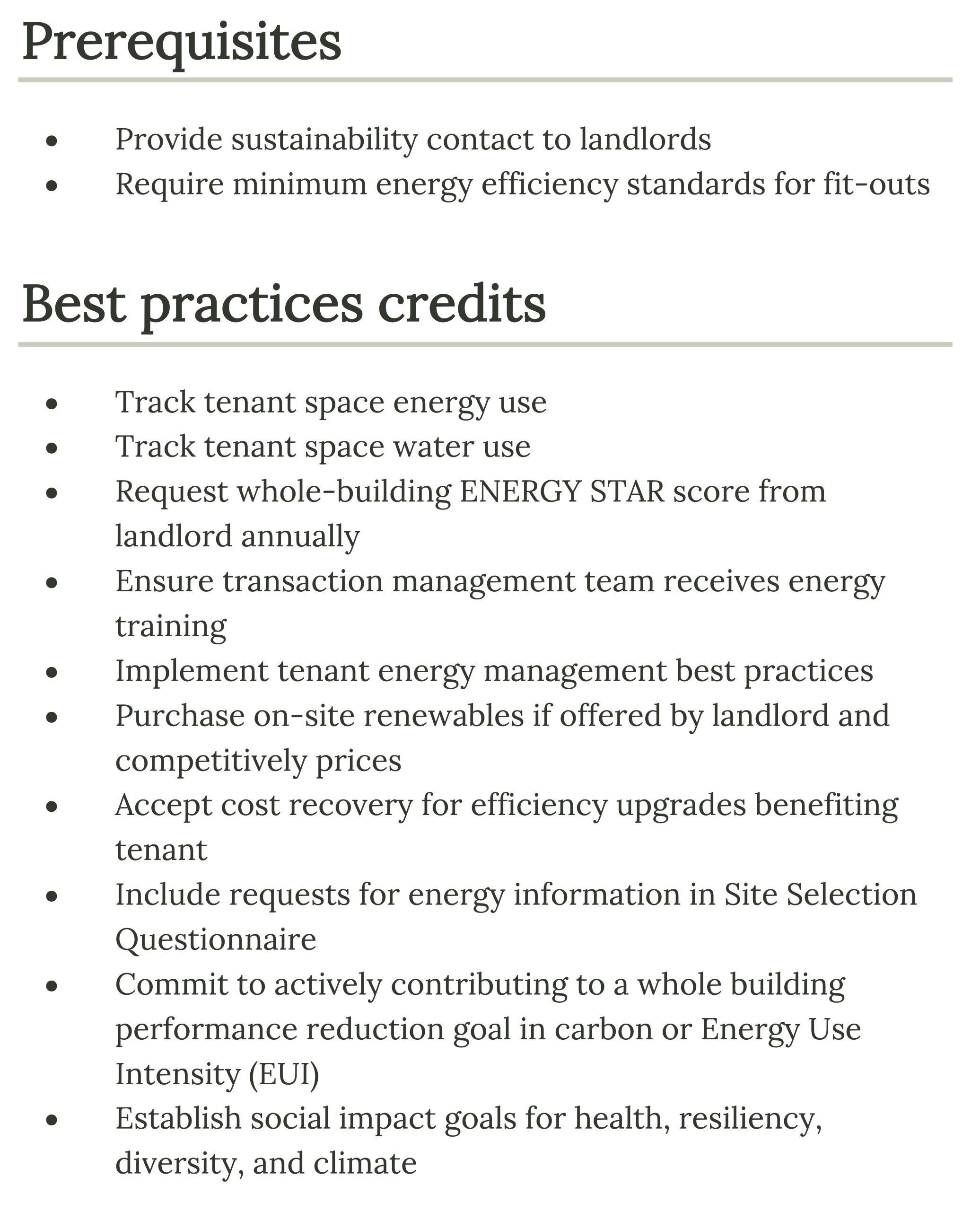6 Integrating Sustainable Practices into Marketing and Leasing
Chapter Contents
6.1 Introduction
6.2 Market Analysis
6.3 Marketing Plan
6.4 Leasing Plan
6.5 Tenant Satisfaction Survey
6.6 Conclusion
Learning Objectives
- Explain how a market analysis informs the supply and demand of sustainable building initiatives
- Identify sustainable building initiatives in a marketing plan
- Describe greenwashing
- Identify green lease components
- Explain the role of a tenant satisfaction survey in assessing sustainable building initiatives
6.1 Introduction
There are many opportunities for property management companies to integrate sustainable practices into the marketing and leasing function. The first step is to perform a market analysis to evaluate the supply and demand of sustainable building initiatives both regionally and locally. This market analysis determines what sustainable property management components can be added to the property marketing plan to attract tenants to the property. Once the tenant is attracted to the property, green lease concepts can be added to the leasing plan to set the basis for sustainable building operations. During the lease, it is a best practice for the property company to engage with tenants through a tenant satisfaction survey on sustainable building initiatives. This feedback is evaluated and any necessary adjustments made to increase tenant satisfaction and foster tenant retention. Holistically, the social sphere of sustainability is addressed through happier tenants, the economic sphere is addressed through increased revenue from tenant retention, and the environmental sphere is addressed through mitigation of ecological impacts through sustainable marketing and leasing practices.
6.2 Market Analysis
Marketing and leasing activities are informed by a market analysis. A market analysis consists of acquiring knowledge about the demographic and economic profiles of the region and neighborhood as it relates to the subject property. Demographics are population data such as education, income, religion, gender, ethnicity, race, age, and marital status information. The economic profile includes data such as the area’s largest employers, the mix of industries, employment statistics, and visitor statistics. Regional and neighborhood analyses of demographic and economic profiles help determine the supply and demand of various buildings and their associated features. Sustainable building features are the focus when considering a sustainable property management plan.
While the majority of Americans believe climate change impacts are a priority, sustainable building initiatives vary depending upon location (Tyson et al., 2021). In 2021, a study was released ranking the 100 largest cities in the United States on the promotion of an environmentally friendly lifestyle, based on the dimensions of environment, transportation, energy sources, and lifestyle and policy (McCann, 2021). Figure 6.1 lists the most sustainable and least sustainable cities in the United States based on this study. From review of this figure, it is likely that sustainable property management initiatives in Gilbert, Arizona, are in less demand than in San Diego, California. However, if there is no supply of sustainable building initiatives in Gilbert, there may be unrecognized or unrealized demand in a specific area in Gilbert that values sustainable building initiatives. This is why a neighborhood analysis is also important.

The market analysis is informed by market signals regarding sustainable building practices. Some relevant questions about market signals include:
- Is the market that the property operates within signaling higher rental rates for sustainable building management practices? Or are they required to merely remain competitive?
- Are there image and brand impacts of providing sustainable property management services?
- Will there be reduced demand for this property in the future if sustainable property management practices are not practiced due to a shift in consumer preferences?
Section References
McCann, A. (2021, October 5). Greenest cities in America. WalletHub. https://wallethub.com/edu/most-least-green-cities/16246
Tyson, A., Kennedy, B., & Funk, C. (2021, May 26). Climate energy and environmental policy. In Gen Z, Millennials stand out for climate change activism, social media engagement with issue. Pew Research Center. https://www.pewresearch.org/science/2021/05/26/climate-energy-and-environmental-policy/
6.3 Marketing Plan
A marketing plan contains the marketing goals for the property in order to attract tenants. The addition of sustainable property management activities to the property marketing plan can help attract tenants that value sustainable building initiatives from various perspectives. If operating in a market that does not place value on sustainable building initiatives from an ecological standpoint, the marketing plan can highlight these initiatives from an economic or health and well-being perspective to appeal to the market.
Example: Marketing Plan
For example, in a market that values the ecological sphere of sustainability, energy-efficient appliances can be advertised to provide a lower-carbon lifestyle and lower utility bills. In a market that does not value the ecological sphere of sustainability, energy-efficient appliances can simply be advertised as providing lower utility bills for the tenant. Alternatively, in a market that values the ecological sphere of sustainability, the property can market its use of low VOC flooring and paints as better for the planet and as a benefit to the occupant’s level of indoor air quality. In a market that does not value the ecological sphere of sustainability, the property can market its use of low VOC flooring and paints solely as a benefit to the occupant’s level of indoor air quality.
Greenwashing, a marketing tactic that portrays a property to be greener than it actually is, is a consideration when creating the marketing plan. While a property company certainly wants to advertise sustainable building initiatives, caution should be taken to ensure consumers are not being deceived that a building is more sustainable than a conventional building when it is not or making claims that have not been verified. Some common examples of greenwashing in property management include marketing the property as energy efficient when it truly is not or advertising the property as having a low carbon footprint when this has not been verified. Properties may be advertised as being eco-friendly with no details and varying colors of green may be used in their marketing materials.

One way to address greenwashing is for tenants and investors to look for reporting efforts on sustainable building initiatives. This can most likely be found through a property company’s ESG reporting, if they participate in this type of reporting. Another method is to look for third-party building and product certifications such as LEED building certification and ENERGY STAR products. These efforts to use third-party certifications can be showcased on the property’s marketing materials, including the certification logos on websites and print materials. Showcasing these logos can also provide positive brand reputation and attract potential tenants. A property’s Walk Score is another third party scoring metric to consider showcasing in the marketing plan’s sustainable activities. Although the property manager doesn’t dictate where the building is sited, a high Walk Score can be attractive to tenants. A Walk Score can be between 0 and 100 and the higher the number, the higher the walkability of the property. Figure 6.2 illustrates the various levels of a Walk Score. The Walk Score website also offers a Transit Score and Bike Score, with the same scoring range, that may be worthwhile to showcase within the property’s marketing materials.
6.4 Leasing Plan
Leasing structures vary widely depending on the property type. Residential leases typically do not vary much from one tenant to another within the same property, with the exception of rent amount and lease start and end dates. Commercial leases, on the other hand, are typically multiple years with lease escalations included as well as a greater propensity for negotiation depending upon the market and tenant. A leasing plan contains the guidelines concerning leasing parameters such as rent, rent term, concessions, tenant allowances, and common area maintenance pass-throughs. The leasing plan contents will vary based on property sector and company guidelines.
In some cases, a lease request for proposal (RFP) is submitted by a tenant to building owners to compare various building space opportunities. The RFP can include various requirements of the tenant such as the size of the building space, common area spaces that the tenant is responsible for paying their pro-rata share of, the proposed use of the space, the lease term and rate, renewal options, tenant improvements, and parking requirements. The lease RFP also may contain sections related to HVAC responsibilities, janitorial services, building amenities, and any sustainable building initiatives. For example, a lease RFP may require a certain level of LEED certification as a corporate responsibility strategy to showcase they are environmentally friendly and also to respond to employees who are requesting sustainable spaces.
The leasing plan can also incorporate green lease concepts. A green lease is a collaboration between property owner, property manager, and property tenant to align sustainable building interests by sharing in the costs and benefits of incorporating sustainable initiatives within the building space. Green leases help to address the split incentive barrier that sometimes prevents either the tenant or landlord from implementing sustainable building initiatives. Green lease language examples can be found at https://www.imt.org/wp-content/uploads/2020/02/IMT-Green-Lease-Language-Examples-January-2020.pdf
Example: Green Leasing
For example, if the tenant is responsible for utility bills, there is no significant financial incentive for the landlord to provide capital improvements that yield energy savings as they will not fully realize the cost savings of these improvements. While there may be some capacity to raise rents because of energy-efficient capital improvements, it is unlikely the landlord will recover their full investment. In order for both landlord and tenant to financially benefit from capital improvements that yield energy savings, a lease provision can be added to resolve this barrier so that both parties are working together toward energy-efficient capital improvements.
Green Lease Leaders, developed by the Institute for Market Transformation and the U.S. Department of Energy’s Better Buildings Alliance, provides a framework for implementing green lease standards. While this framework is limited in scope, it does provide standardization for landlords and tenants. Figure 6.3 illustrates the prerequisites and credits for this framework to demonstrate leadership in green leasing for landlords in both commercial and multifamily settings. To achieve Silver recognition the landlord must meet two of the three prerequisites and address at least five of the best practices credits, while Gold recognition requires proof of execution of these prerequisites and best practices credits through documentation such as an executed lease. For further reading, the Green Lease Leaders Reference Guide for Tenants can be found here: https://www.greenleaseleaders.com/wp-content/uploads/2021/02/Green-Lease-Leaders-Tenants-Reference-Guide-FINAL.pdf.

Figure 6.4 illustrates the prerequisites and credits for this framework to demonstrate leadership in green leasing for tenants in commercial settings. To achieve silver recognition, the tenant must meet both prerequisites and address at least five of the best practices credits while gold recognition requires proof of execution of these prerequisites and best practices credits through documentation such as an executed lease. For further reading, The Green Lease Leaders Reference Guide for Landlords can be found here: https://www.greenleaseleaders.com/wp-content/uploads/2022/02/Green-Lease-Leaders-Landlords-Reference-Guide-FINAL.pdf.

6.5 Tenant Satisfaction Survey
Tenant feedback on sustainable property management practices helps the property company understand issues that are important to tenants and subsequently helps retain tenants through resolution of any issues. It is holistic in the sense that it takes into account the health and well-being of the building occupants while also fostering a positive economic situation for the property company through increased tenant satisfaction and tenant retention. A best practice to elicit this feedback is through a regularly occurring tenant satisfaction survey. A tenant satisfaction survey is useful to not only assess what sustainable products and services may be important to tenants that are not currently in place, but also to assess tenants’ level of knowledge about sustainable initiatives at the property or company level. It also provides feedback on what sustainable initiatives are working well at the property and company level. This feedback can inform recommendations for sustainable building initiatives moving forward.
There are multiple formats for a tenant satisfaction survey. A questionnaire, interview, focus group, or a combination of these methods can be used to create the format for building occupant feedback. For example, a focus group consisting of a smaller group of tenants may be the first step in crafting a full property or property portfolio questionnaire. The responses from this focus group can help in crafting a standardized survey for the property as a whole. A standardized survey can also be helpful when comparing results and looking for themes across the property portfolio. If using a questionnaire, a 1-5 scale can be used to assess tenant satisfaction on sustainable building initiatives, with 1 being very unsatisfied to 5 being very satisfied. Below are areas where questions can be crafted related to satisfaction with sustainable property management:
- Energy Efficiency
- Water Efficiency
- Indoor Environmental Quality
- Waste Management
- Site Sustainability
The results of the sustainable property management tenant satisfaction survey are helpful in informing future decisions toward a sustainable property management plan. They assist the property company in understanding the satisfaction of current sustainable building offerings as well as the level of tenant interest. These results are likely to vary by tenant, building, and market. If there is lower interest in sustainable building initiatives, tenants may still find satisfaction in a sustainable building initiative should it reduce operating costs and/or increase the health and well-being of building occupants. If any of the feedback needs further clarification, a focus group can help with this clarification.
Based on the feedback from the surveys, a plan can be developed to incorporate the feedback that includes specific action to be taken, deadlines for implementation, and how these action items will be funded. Once this plan is implemented, evaluation through another tenant satisfaction survey is important to assess the success of these implemented actions. Continual tenant engagement and collaboration can cultivate a higher level of tenant satisfaction, which may promote improved tenant retention rates. By retaining tenants, a property is able to continue collecting rental revenue and also does not have to spend funds marketing and finding new tenants.
6.6 Conclusion
A market analysis is critical to evaluating the position of the subject property to the broader market of properties within the region and neighborhood as it relates to sustainable building initiatives. The interest in sustainable building activities will likely vary by tenant, property, and market so the property company needs to understand the market within which they operate. If tenants have a relatively low interest in sustainable building initiatives, the property can appeal to the financial and health benefits of the initiative both in the marketing plan and tenant satisfaction survey. In markets that value sustainable building activities, including these activities in the marketing plan can enhance a property’s competitive profile in the marketplace for prospective tenants, and provide positive reputation impacts. Once a tenant is attracted to the property, creating leases with sustainable measures within the terms sets the basis for sustainable building operations. During the lease, a tenant satisfaction survey engages tenants with the sustainable activities taking place at the property and can assess their level of satisfaction and interest in these activities. This helps inform the future of a sustainable property management plan.
Discussion Questions
- What is the difference between a market analysis and a marketing plan?
- Why does demand for sustainable building initiatives vary by U.S. city?
- How can a tenant satisfaction survey be helpful in assessing sustainable building initiatives?
- What is your key takeaway from this chapter? In which section did you find it?
Activities
- Research a multifamily community in the municipality where you reside and answer the following questions:
- Does their website advertise any sustainable building initiatives?
- If so, do you believe any greenwashing is occurring? Why or why not?
- Look up the Walk Score, Transit Score, and Bike Score (https://www.walkscore.com/) of the building you researched in the first question and answer the following questions:
- What is the Walk Score?
- What is the Transit Score?
- What is the Bike Score?
- Do you find value in these scores? Why or why not?
- Create five questions a property manager may want to ask through a questionnaire, interview, or focus group to obtain tenant satisfaction information about sustainable building initiatives. Explain why these questions are important to ask.
Figure References
Figure 6.1: Greenest and least green cities in the United States (2021). Kindred Grey. (2023). Data from Greenest cities in America. (2022, October 5). WalletHub. https://wallethub.com/edu/most-least-green-cities/16246.. CC BY 4.0
Figure 6.2: Walk score levels. Kindred Grey. (2023). Data from How Walk Score works. (2023). Walk Score. https://www.walkscore.com/how-it-works/.. CC BY 4.0
Figure 6.3: Green lease leaders landlord framework prerequisites and credits. Kindred Grey. (2023). Data from Green lease leaders reference guide for landlords. (n.d.). https://www.greenleaseleaders.com/wp-content/uploads/2022/02/Green-Lease-Leaders-Landlords-Reference-Guide-FINAL.pdf. CC BY 4.0
Figure 6.4: Green lease leaders tenant framework prerequisites and credits. Kindred Grey. (2023). Data from Green lease leaders reference guide for landlords. (n.d.). https://www.greenleaseleaders.com/wp-content/uploads/2022/02/Green-Lease-Leaders-Landlords-Reference-Guide-FINAL.pdf. CC BY 4.0
Image Descriptions
Figure 6.1: The top ten greenest cities in the U.S. are 1) San Diego, CA, 2) San Francisco, CA, 3) Portland, OR, 4) Irvine, CA, 5) Honolulu, HI, 6) Fremont, CA, 7) Washington, D.C., 8) Oakland, CA, 9) Seattle, WA, and 10) San Jose, CA. The least green cities in the U.S. are 100) Gilbert, AZ, 99) Mesa, AZ, 98) Glendale, AZ, 97) Baton Rouge, LA, 96) Chandler, AZ, 95) Newark, NJ, 94) Hialeah, FL, 93) Houston, TX, 92) Detroit, MI, and 91) Louisville, KY. Return to figure 6.1.
Figure 6.2: The score of 90-100 is a walker’s paradise: daily errands do not require a car; 70-89 is very walkable: most errands can be accomplished on foot; 50-69 is somewhat walkable: some errands can be accomplished on foot; 25-49 is car-dependent: most errands require a car; and 0-24 is car-dependent: all errands require a car. Return to figure 6.2.
Figure 6.3: Prerequisites: provide sustainability contact information; implement cost recovery clause for energy efficiency upgrades benefiting tenant; implement energy efficiency improvements during unit turns (multifamily only). Best practices credits: track common area energy use; track common area water use; disclose whole-building ENERGY STAR score to tenant annually; disclose whole building ENERGY STAR water score to tenant annually (multifamily only); ensure brokers or leasing agent(s) have energy training; implement landlord energy management best practices; require tenants to purchase on-site renewables if offered by landlord and competitively priced; meter tenant spaces for electricity use; request annual tenant energy disclosure; require minimum energy efficiency fit-out for tenants; establish a tenant energy efficient engagement and training plan; and demonstrate innovation in leasing. Return to figure 6.3.
Figure 6.4: Prerequisites: provide sustainability contact to landlords; and require minimum energy efficiency standards for fit-outs. Best practices credits include: track tenant space energy use; track tenant space water use; request whole-building ENERGY STAR score from landlord annually; ensure transaction management team receives energy training; implement tenant energy management best practices; purchase on-site renewables if offered by landlord and competitively prices; accept cost recovery for efficiency upgrades benefiting tenant; include requests for energy information in site selection questionnaire; commit to actively contributing to a whole building performance reduction goal in carbon or energy use intensity (EUI); and establish social impact goals for health, resiliency, diversity, and climate. Return to figure 6.4.
The analysis of demographic and economic profiles of the region and neighborhood as they relate to the subject property
Population data such as education, income, religion, gender, ethnicity, race, age, and marital status information
A plan containing the marketing goals for the property in order to attract tenants
A marketing tactic that portrays a property to be greener than it actually is
A third-party scoring metric that illustrates the walkability level of the property
A plan containing guidelines concerning leasing parameters such as rent, rent term, concessions, tenant allowances, and common area maintenance pass-throughs
A request submitted by a tenant to building owners to compare various building space opportunities
A lease that involves collaboration between property owner, property manager, and property tenant to align green building interests by sharing in the costs and benefits of incorporating sustainable initiatives within the building space
A national program that provides a framework for implementing green lease standards
A survey administered to tenants to receive feedback on property management and operations that can inform recommendations for the property moving forward

